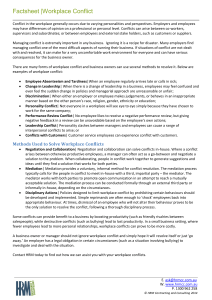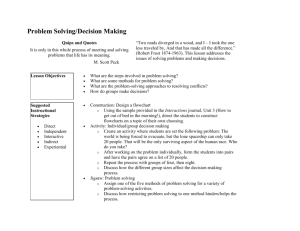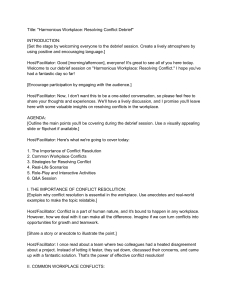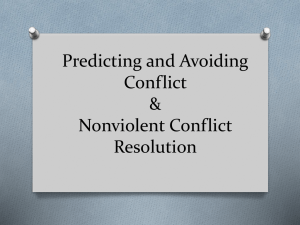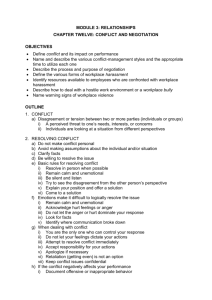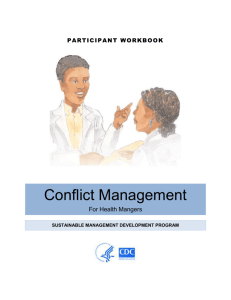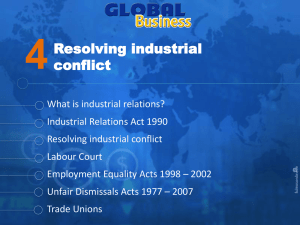Dealing with Conflict & Difficult People in the Workplace
advertisement
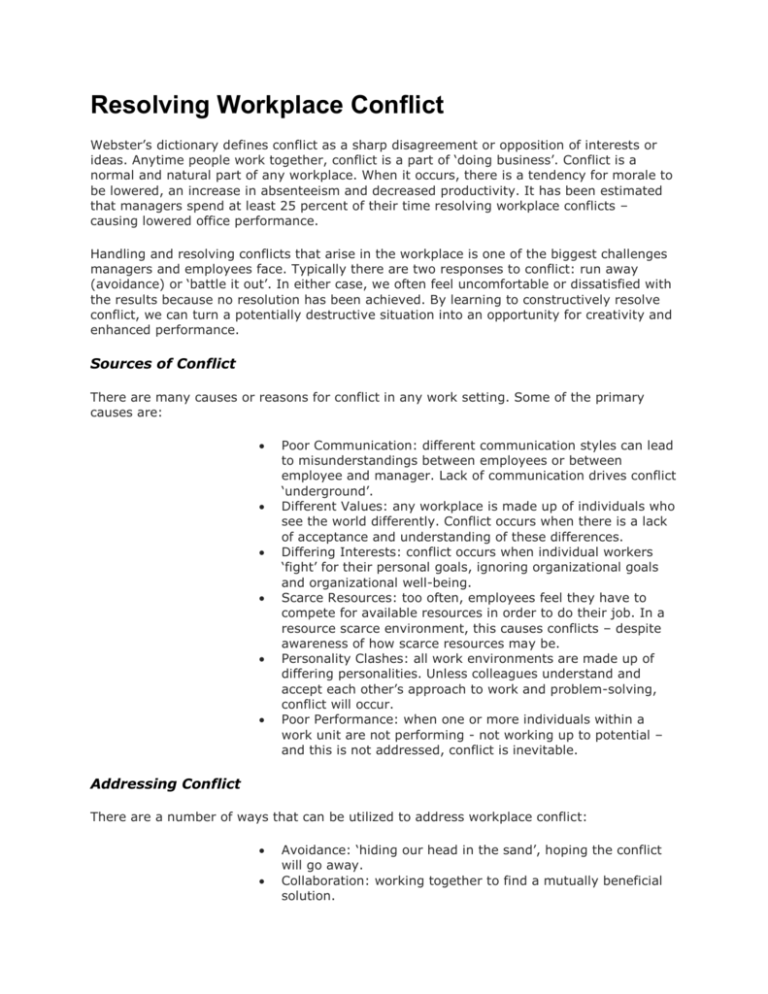
Resolving Workplace Conflict Webster’s dictionary defines conflict as a sharp disagreement or opposition of interests or ideas. Anytime people work together, conflict is a part of ‘doing business’. Conflict is a normal and natural part of any workplace. When it occurs, there is a tendency for morale to be lowered, an increase in absenteeism and decreased productivity. It has been estimated that managers spend at least 25 percent of their time resolving workplace conflicts – causing lowered office performance. Handling and resolving conflicts that arise in the workplace is one of the biggest challenges managers and employees face. Typically there are two responses to conflict: run away (avoidance) or ‘battle it out’. In either case, we often feel uncomfortable or dissatisfied with the results because no resolution has been achieved. By learning to constructively resolve conflict, we can turn a potentially destructive situation into an opportunity for creativity and enhanced performance. Sources of Conflict There are many causes or reasons for conflict in any work setting. Some of the primary causes are: Poor Communication: different communication styles can lead to misunderstandings between employees or between employee and manager. Lack of communication drives conflict ‘underground’. Different Values: any workplace is made up of individuals who see the world differently. Conflict occurs when there is a lack of acceptance and understanding of these differences. Differing Interests: conflict occurs when individual workers ‘fight’ for their personal goals, ignoring organizational goals and organizational well-being. Scarce Resources: too often, employees feel they have to compete for available resources in order to do their job. In a resource scarce environment, this causes conflicts – despite awareness of how scarce resources may be. Personality Clashes: all work environments are made up of differing personalities. Unless colleagues understand and accept each other’s approach to work and problem-solving, conflict will occur. Poor Performance: when one or more individuals within a work unit are not performing - not working up to potential – and this is not addressed, conflict is inevitable. Addressing Conflict There are a number of ways that can be utilized to address workplace conflict: Avoidance: ‘hiding our head in the sand’, hoping the conflict will go away. Collaboration: working together to find a mutually beneficial solution. Compromise: finding the middle ground whereby a ‘little is given and little is gotten’. Competing: ‘may the best person win’. Accommodation: surrendering our own needs and wishes to please the other person. It is generally believed that either collaboration or compromise are the most productive forms of addressing conflict because there is not a winner or loser but rather a working together for the best possible solution. Conflict Resolution Arriving at a positive resolution of conflict is always the ultimate goal. In resolving conflict, it is important to make sure you do the following: Clearly articulate the causes of the conflict – openly acknowledging there will be differing perceptions of the problem(s). Make a clear statement of why you want the conflict resolved and reasons to work on conflict. Communication of how you want the conflict resolved. Address the issues face-to-face (notes, email correspondence, memos are not a productive way to resolve differences). Stick to the issues. In trying to resolve conflict, it is tempting to resort to name calling or bring up issues from the past. It is important to address specific behaviors and situations if change is to take place. Take time out if necessary. In the resolution of a conflict, our emotions may interfere with arriving at a productive resolution. If this transpires, take a time-out and resume resolving the conflict at another designated time. Summary Avoiding conflict is often the easiest way to deal with it. It does not however make it go away but rather pushes it underground, only to have it resurface in a new form. By actively resolving conflict when it occurs, we can create a more positive work environment for everyone. FEAP Services The Faculty/Employee Assistance Program is available to help resolve individual or office conflicts. For assistance please call 603-646-1165. All inquiries are confidential.


